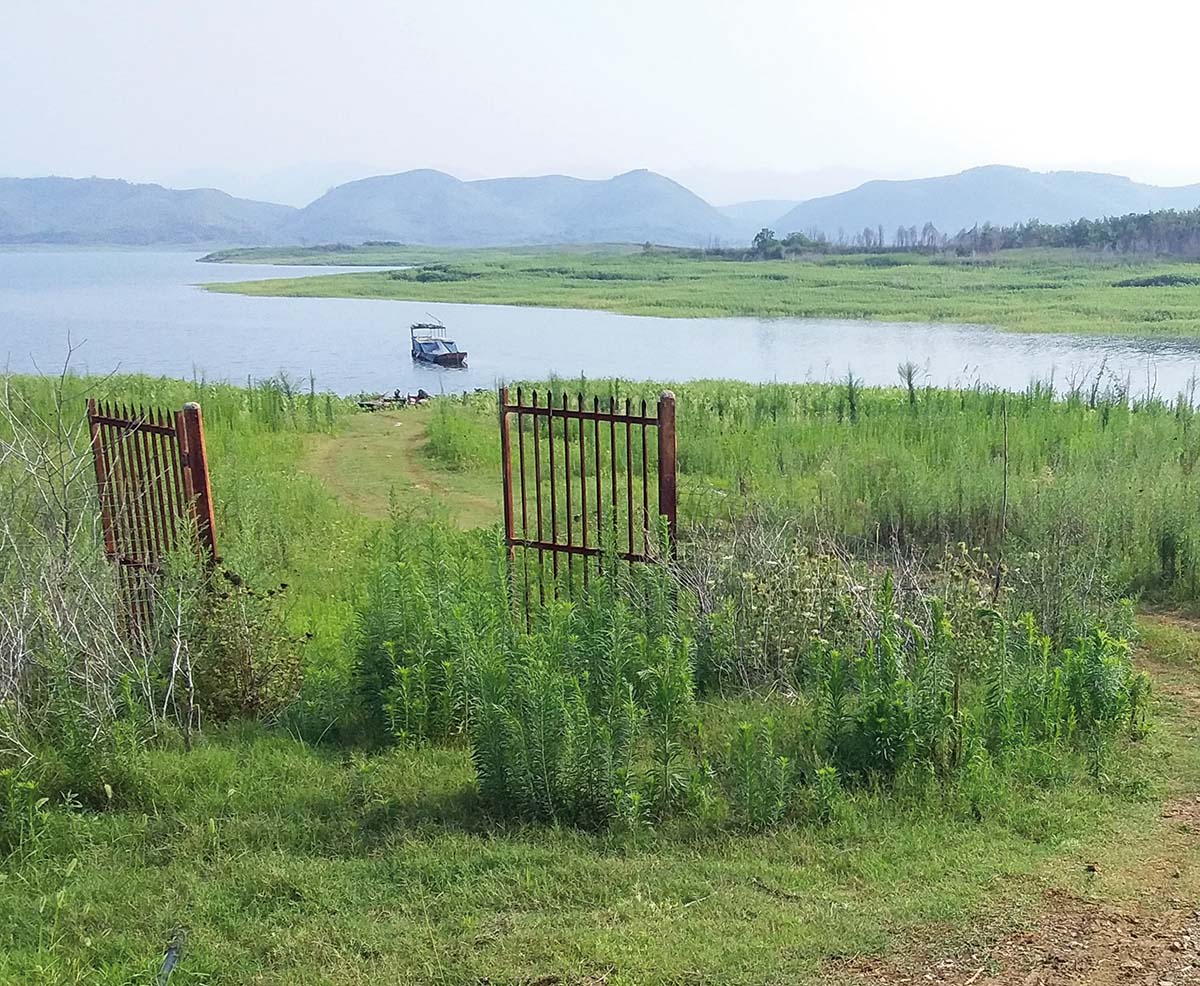The hydropolitics of China’s latest mega water project
Since 2014, the drinking water supply of Beijing and Tianjin has come almost exclusively from the Danjiangkou Reservoir 1000km away. Thanks to the massive South-North Water Transfer scheme, wealthy city residents turn on their taps and consume clean water from an economically marginalised part of central China. The scheme, the most recent of China’s mega water projects, brings water from the Yangtze River and its tributaries to drier parts of northern China, mostly for urban and industrial use.
For the past three years, as part of an Australian Research Council grant “The Technopolitics of China’s South-North Water Transfer Project,” I have been studying the impacts of the South-North Water Transfer Project on the Danjiangkou region. With colleagues from the University of Melbourne, Nanjing’s Hehai University and Wuhan’s Changjiang Water Resources Protection Institute, I visited the Danjiangkou Reservoir itself (the source of the scheme’s Middle Route), surrounding counties in Henan Province, and upstream counties in Shaanxi Province to interview farmers and officials and to better understand how this massive inter-basin transfer scheme is reshaping local economies, livelihoods, and environments.
The counties that surround the reservoir, including Xichuan County in Henan Province, have experienced sustained impacts since the early 2000s: first in the need to resettle people and industries in advance of inundation as the Danjiangkou Dam height was raised, and then in pursuit of strict water quality targets. The Danjiangkou region has suffered entrenched problems of water pollution, from industrial runoff (nearby Shiyan City has since Mao’s Third Front been a major car manufacturing base), urban domestic runoff, and agricultural runoff. To achieve drinking water of a high enough standard, there are now strict controls in place for the use of pesticides and fertilisers, farming bans in the Reservoir’s “fluctuation zone”, as well as projects to improve wastewater treatment in towns and to restructure local economies away from polluting industries like cement, paper, and chemical manufacturing to tourism and organic agricultural production. In a recently published article, my co-author and I begin to document some of these processes and the narratives of sacrifice and opportunity that go with them. With billions of RMB in lost GDP, the responsibility of supplying far-away cities with high quality water has clearly had a huge economic impact on what are quite poor counties in central China. Their successful transformation to “green” development paths is yet to be seen.
In 2019 we began to examine how this prioritisation of water quality is impacting people’s livelihoods in Xichuan County. We travelled to several villages that had lost considerable farmland to inundation and where many residents had been resettled to towns in and beyond the county. Our interviews suggest that local smallholders are being squeezed by two powerful forces. The first is government farming bans on what used to be people’s contracted farmland (this highly fertile land is exposed for about half of the year when the Reservoir’s levels are low), instructions to pursue organic farming instead of using synthetic pesticides and fertilisers, forceful encouragement to plant cash crops instead of corn and wheat, and a ban on livestock close to the Reservoir. In an area where families’ landholdings were already very small and have been further constrained by inundation, these directives are coalescing to undermine viable smallholder livelihoods and further push people to rely on off-farm wage employment. The second force is the preferential treatment given to agribusinesses by local government. Convinced that small farmers are polluting and “backward”, local authorities have mediated large-scale land transfers to outside enterprises to establish specialised, “organic” farms. In future these farms will not just produce fruit, but are also designed to attract city dwellers to pick, stay in rural guesthouses, and enjoy the local scenery. Where small farmers fit in this new rural future is unclear.

From the Danjiangkou Reservoir, Henan (Image by the author, 2019) to the waters main destination, Beijing (Upsplash, courtesy Li Vang).
Measured in environmental terms, the interventions at the Danjiangkou Reservoir have been an outstanding success. Water quality in the Reservoir and its tributaries now consistently ranks as Grade I or Grade II, ensuring that the residents of Beijing and Tianjin are consuming water of the highest quality. Factories have mostly been closed, rubbish is regularly swept from the Reservoir’s surface, intensive water quality monitoring is conducted, pollution spills are jumped on, and extensive reforestation is taking place to both beautify the local area and to filter the water flowing into the Reservoir. But much like earlier environmental projects of the Chinese state, the South-North Water Transfer Project is having long-lasting and deeply unequal environmental and socio-economic impacts. A clear example is that while Beijing and Tianjin residents consume high-quality Danjiangkou water, at the time of our last visit in 2019, towns and villages surrounding the Reservoir in Henan were still reliant on polluted groundwater.
Geographers based in Melbourne have for nearly two decades been engaged in documenting and understanding the on-ground impacts of China’s environmental governance, including the Three Gorges Project, the Yellow River crisis, environmental resettlement, Shanghai’s water insecurity, household water consumption, and the Chinese dam industry’s activities in Africa. Our current research into the South-North Water Transfer Project builds on this earlier work and shows the value of sustained, collaborative social science research with Chinese colleagues.
Sarah Rogers
Centre for Contemporary Chinese Studies
The University of Melbourne
rogerssm@unimelb.edu.au